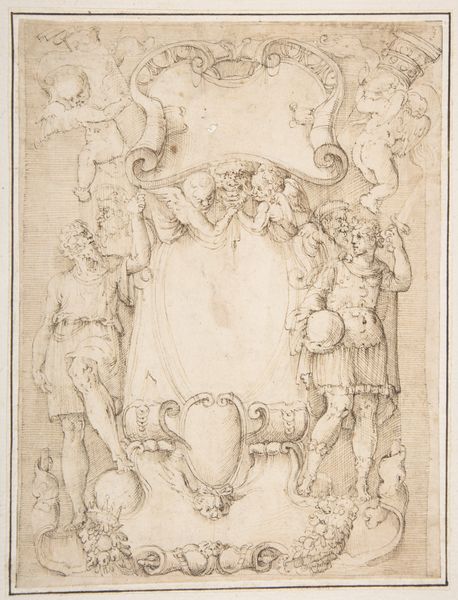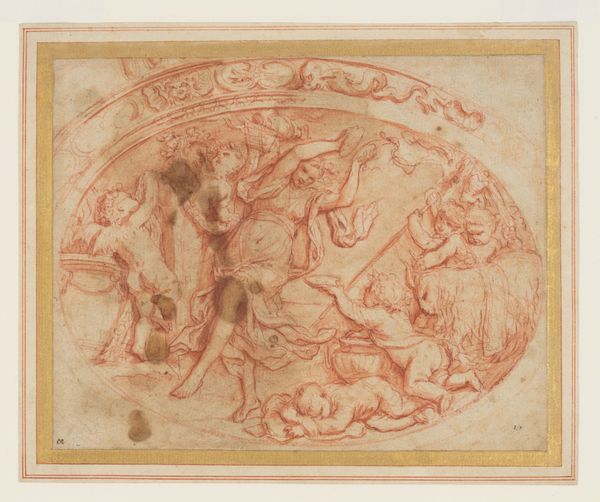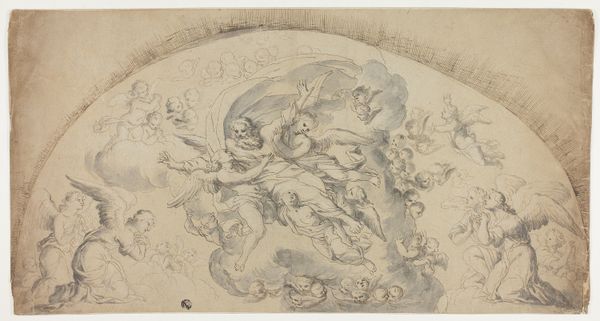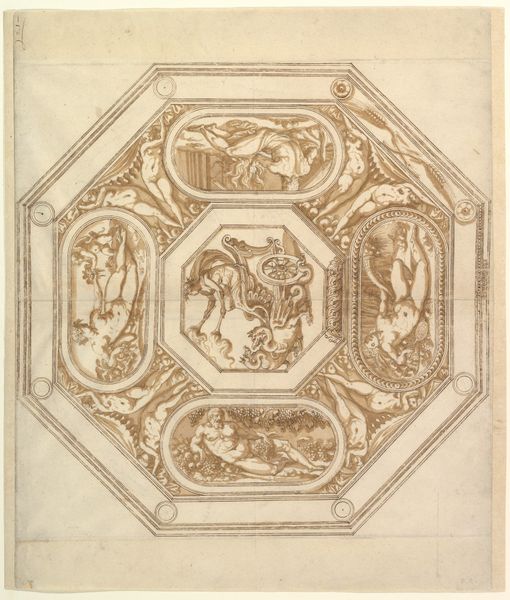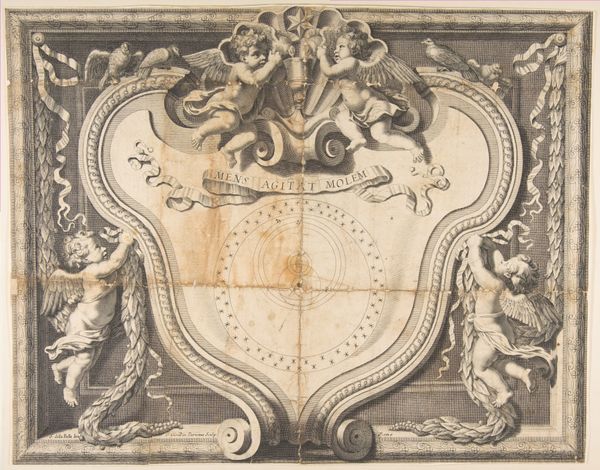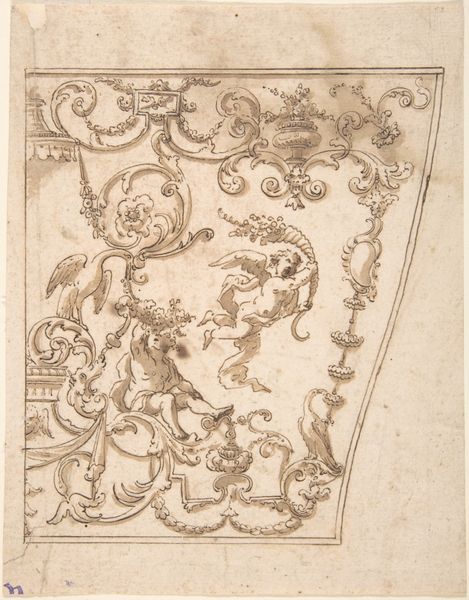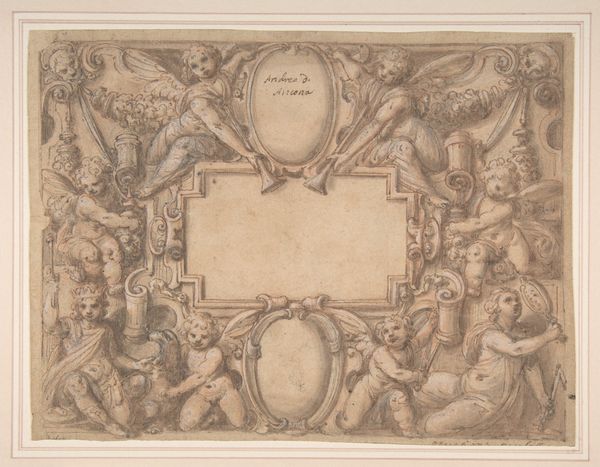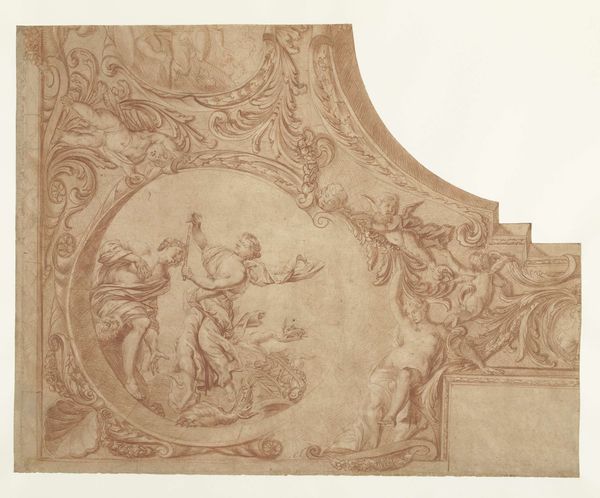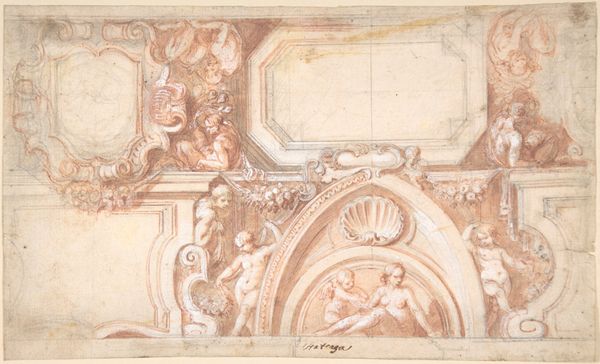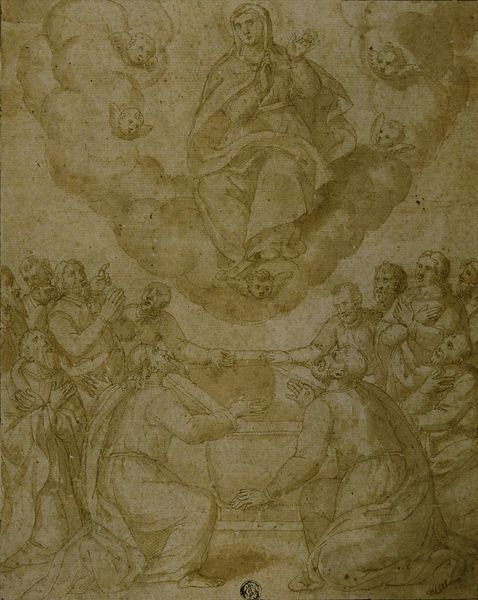
Semi-Circular Design of Battle of Sea Gods with Border of Sea Creatures 1570 - 1620
0:00
0:00
drawing, print, paper, ink, charcoal
#
drawing
#
allegory
# print
#
landscape
#
charcoal drawing
#
figuration
#
paper
#
11_renaissance
#
ink
#
charcoal
#
history-painting
#
charcoal
#
italian-renaissance
Dimensions: 10 x 18 1/8 in. (25.4 x 46 cm)
Copyright: Public Domain
Editor: Here we have a piece titled "Semi-Circular Design of Battle of Sea Gods with Border of Sea Creatures," dating from 1570 to 1620, and currently residing at the Metropolitan Museum of Art. I am struck by the dynamic composition. The artist, whose name is unknown, used ink and charcoal on paper to depict this scene. What do you see in this work? Curator: Well, what immediately jumps out is the intended placement. Its semi-circular shape suggests it was conceived as a decorative element, perhaps a lunette above a doorway or within a larger architectural design. Consider how prints and drawings circulated in Renaissance workshops. This might be a design proposal, showcasing the artist's ability to interpret classical themes—battles of sea gods, no less—for wealthy patrons eager to display their erudition. Editor: A design proposal, interesting. It’s like a sample. Were these drawings common as a means to get commissions? Curator: Precisely! Think of the intense competition between artists in the Renaissance. Visual eloquence was essential, and a drawing like this was a demonstration of one’s skill in history painting and ability to integrate complex allegorical elements. The prominent display of classical subject matter appealed to the elite, showcasing the commissioner's own learnedness and worldliness. How does that influence your reading of it? Editor: It definitely makes me view it differently. It’s not just art for art's sake. It’s strategic. Thinking about who this was created *for* really shapes my perspective. Thank you. Curator: Exactly. Art rarely exists in a vacuum. Considering the socio-political forces at play really deepens our understanding and appreciation. I think both of us see it more clearly now.
Comments
No comments
Be the first to comment and join the conversation on the ultimate creative platform.

